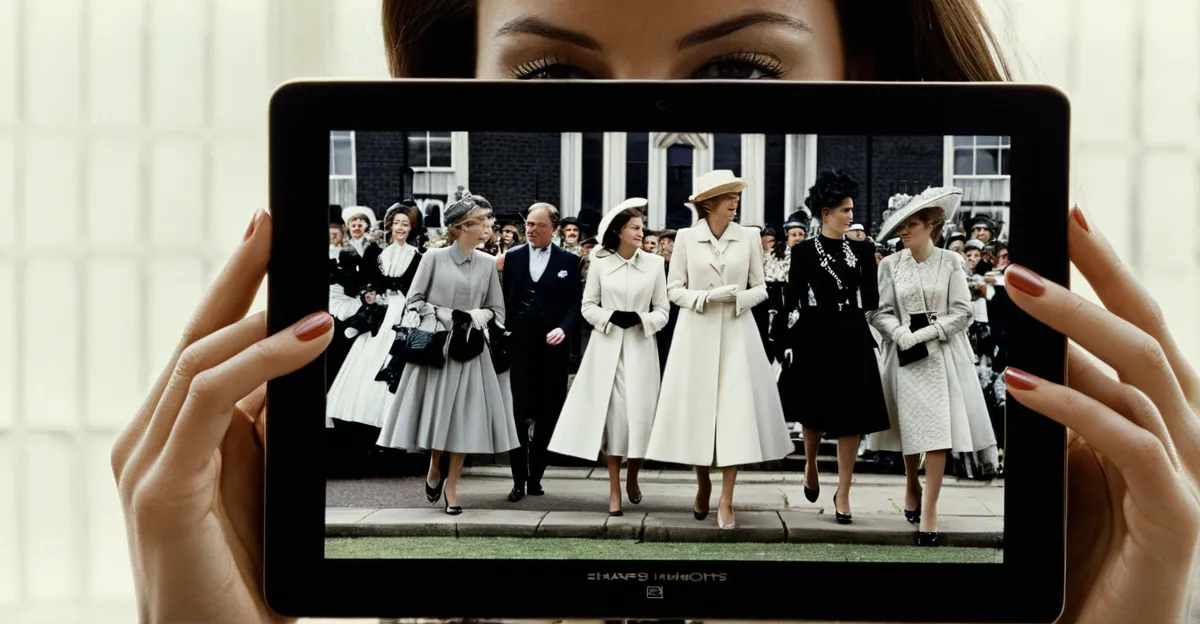Defining Iconic Fashion Moments in UK Women’s History
Understanding what qualifies as an iconic fashion moment involves assessing its lasting impact on style and culture. In UK women’s fashion history, moments become iconic when they not only capture a distinct style but also signify broader societal shifts or innovations that resonate beyond their era. For instance, garments or trends associated with key events, influential figures, or movements often hold iconic status due to their symbolic or transformative power.
UK women have played a pivotal role in shaping global fashion trends, contributing styles and attitudes that reach far beyond Britain’s borders. The UK women’s fashion timeline reveals how fashion has continuously mirrored and influenced social context—from post-war austerity through rebellious youth cultures to cutting-edge contemporary designs.
Also read : How can UK women blend high street and designer fashion effectively?
The historical and cultural contexts surrounding these moments are essential. War-time rationing shaped practical yet stylish attire, while post-war optimism fueled bold experimentation. Similarly, the rise of youth subcultures in the 1960s and 1970s introduced revolutionary fashion statements, reflecting changing values about identity and freedom. This intertwining of culture and fashion underscores why UK women’s fashion history offers not just a catalogue of styles but a narrative of evolving societal ideals.
Royal Influence: Landmark Outfits from British Royalty
British royal fashion has long set standards that ripple through global style, illustrating the powerful role the British monarchy style plays in shaping public taste. An emblematic example is Queen Elizabeth II’s coronation dress, designed by Norman Hartnell in 1953. This gown was not only a masterclass in craftsmanship but also carried deep symbolism, affirming the monarchy’s resilience and tradition after World War II. Its intricate embroidery and luxurious fabrics conveyed permanence and authority, making it a defining iconic fashion moment in UK women’s fashion history.
Also to discover : How Can UK Women Reinvent Their Wardrobes with Sustainable Fashion Choices?
Princess Diana revolutionised royal style with her wedding dress in 1981, crafted by Elizabeth and David Emanuel. The voluminous silk taffeta gown, dramatic puffed sleeves, and 25-foot train became emblematic of 1980s grandeur, influencing bridal fashion worldwide. Later, the “Revenge Dress” she wore in 1994 boldly challenged royal expectations. This striking, form-fitting black gown captured media attention and public imagination, representing a shift toward individual expression within the traditionally restrained royal image.
In more recent decades, Kate Middleton and Meghan Markle’s wedding gowns redefined modern elegance with clean lines paired with subtle details. Kate’s Alexander McQueen dress honored royal heritage through lace and tiara symbolism, while Meghan’s Givenchy gown emphasized simplicity and contemporary design. Both choices reflect evolving ideals of royal femininity, merging tradition with personal style and making their weddings critical moments in the women’s fashion timeline.
These royal outfits are more than just clothing—they are powerful cultural artifacts that document the evolving role and image of women within British society. Each of these garments has cemented its place in the UK women’s fashion history, influencing designers and the public alike. The British monarchy style continues to serve as a mirror to the nation’s values and an incubator for iconic fashion statements.
Revolutionary Trends and Youth Movements
The UK youth culture fashion of the 1960s initiated a pivotal shift, profoundly marking the women’s fashion timeline with vibrant rebellion and innovation. Central to the “Swinging Sixties” was Mary Quant’s introduction of the miniskirt, a garment that challenged traditional norms by embracing youthful freedom and modernity. Quant’s designs, together with Twiggy’s iconic mod look, popularized a fresh aesthetic emphasizing bold shapes and playful attitudes, illustrating how UK women’s fashion history encapsulates broader cultural transformations.
Moving into the 1970s and 1980s, punk fashion UK emerged as a loud, defiant statement against the establishment. Vivienne Westwood, a seminal British fashion designer, spearheaded this movement with provocative street style pieces associated with the Sex Pistols and other subcultural icons. The punk look—characterized by ripped fabrics, safety pins, and anarchic graphics—reflected disenchantment and a desire for individual expression. This era solidified an iconic fashion moment, linking clothing to powerful political and social critiques, thus underscoring the influence of youth culture on global fashion norms.
The 1990s Britpop and “Cool Britannia” period further diversified UK youth culture fashion, blending casual streetwear with distinctly British attitudes. This phase saw a fusion of music, art, and fashion, with ordinary clothing items gaining symbolic status, confirming the UK’s role as a trendsetter. Consequently, these revolutionary trends, emerging from youth movements, form essential chapters in UK women’s fashion history, illustrating the evolving relationship between identity, culture, and style.
Notable Designers and Fashion Icons
British fashion designers have played a pivotal role in shaping the UK women’s fashion history through their innovative contributions, establishing the nation as a powerhouse of style and creativity. Among the most influential is Vivienne Westwood, whose punk revolution disrupted traditional fashion norms in the 1970s and 1980s. Westwood’s bold use of anarchic symbols and rebellious aesthetics not only defined punk fashion UK but also empowered youth movements to express identity through clothing, embedding an iconic fashion moment within the broader women’s fashion timeline.
Another major figure is Alexander McQueen, whose dramatic and conceptual couture introduced new dimensions of storytelling and artistry to British fashion. McQueen’s designs blurred the lines between fashion and performance art, emphasizing innovation that left a lasting imprint on global style. His work expanded the perception of what British designers could achieve, reinforcing the UK’s reputation for audacity and craftsmanship.
UK style icons like Naomi Campbell have further elevated British fashion on the world stage. As one of the most recognized supermodels, Campbell exemplifies the global reach of UK fashion influence. Similarly, designers such as Stella McCartney continue to innovate with sustainable practices and modern aesthetics, ensuring the legacy of UK fashion remains dynamic and relevant. These figures collectively highlight the enduring influence of UK fashion and its significance within the evolution of women’s style.
Cultural Impact and Lasting Influence
Iconic fashion moments in UK women’s fashion history have far-reaching effects that extend well beyond fabric and design. These moments often act as catalysts for social change and forms of self-expression, reflecting and shaping attitudes within society. For example, punk fashion in the 1970s was not merely a style but a visual proclamation of rebellion and discontent, influencing youth identity and political discourse across the UK and internationally.
The cultural impact UK fashion exerts is evident in how certain styles and trends resurface cyclically within popular culture. From Mary Quant’s miniskirt symbolizing youthful liberation in the 1960s to Vivienne Westwood’s punk innovations, these iconic fashion moments set precedents that designers and wearers revisit, adapt, and reinterpret. This repetitive revival demonstrates an enduring fascination with UK fashion’s ability to merge aesthetics with cultural narratives.
Globally, the legacy of UK fashion moments extends into modern fashion and media, permanently embedding British influence in the worldwide style lexicon. British designers’ innovations and UK style icons help keep these legacies alive, ensuring that global fashion influence remains intertwined with British creativity. Consequently, the UK’s contributions continue shaping how the world perceives fashion as both an art form and a vehicle for personal and societal expression.




